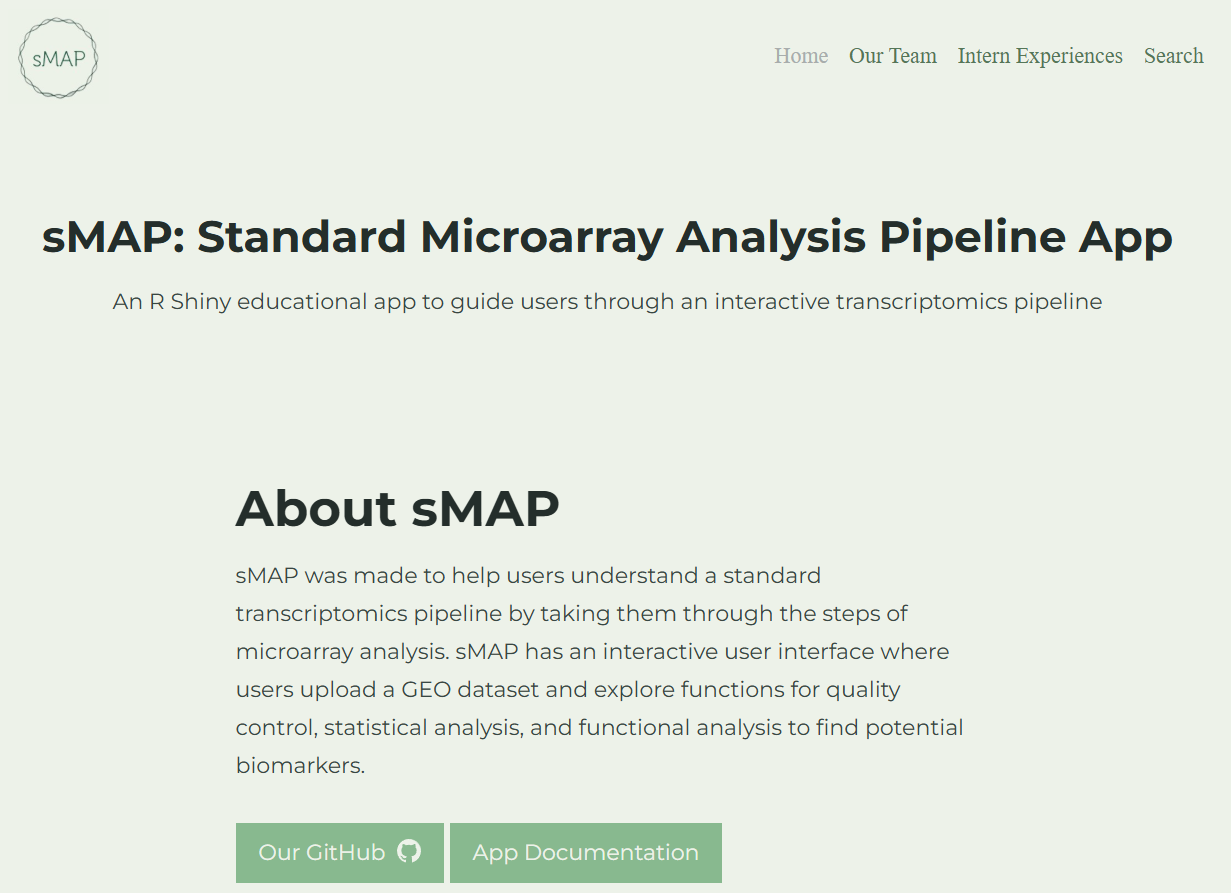Microarray analysis for non-coders using sMAP
Simplifying Microarray Analysis for Everyone: The Story of sMAP
The field of transcriptomics is continuously evolving, with RNA sequencing becoming increasingly prevalent. However, microarrays have long served as the backbone of gene expression studies, resulting in a substantial amount of valuable biological data that was generated using this technology. Moreover, microarrays still hold significance for specific applications. Analyzing this data, whether it is legacy data or newly generated, often necessitates a considerable amount of bioinformatics expertise and coding skills, which can pose a challenge for many bench scientists, students, and researchers. How can we make these powerful analyses more accessible?
This question led to the creation of sMAP (Standard Microarray Analysis Pipeline), an educational project developed during my internship with STEM-Away. Our ambitious goal was to build an interactive, user-friendly tool using R Shiny that would guide individuals without coding experience through a complete microarray data analysis workflow. This includes loading raw data files, exploring differentially expressed genes, and visualizing results.
Building sMAP: A Global Collaboration
Developing sMAP wasn’t a solo effort; it was a truly collaborative and educational venture. Through the STEM-Away program, I had the fantastic opportunity to lead a large, diverse team of over 40 international participants – a mix of enthusiastic high school students, university students, and junior professionals. Together, we brainstormed, designed, coded, and tested the sMAP application. This project was as much about building a useful tool as it was about providing a real-world, hands-on bioinformatics software development experience for everyone involved.
My Role in Our Team Effort
Within this vibrant team, my role was to steer the technical development of the R Shiny application. This involved guiding the group in translating standard microarray analysis steps (like data normalization, quality control, differential expression analysis using limma, and various plotting methods) into an intuitive web interface. It also meant coordinating the diverse contributions from team members across different time zones and ensuring we collectively moved towards our shared goal.
Why sMAP Mattered (and Still Does Conceptually)
Tools like sMAP aim to lower the barrier to entry for biological data analysis. By wrapping complex command-line procedures in a graphical interface, the project sought to:
Empower Non-Coders: Enable researchers and students to analyze microarray data confidently without needing to write R code.
Educate: Act as an interactive guide, helping users understand the workflow and principles behind microarray analysis.
Promote Accessibility: Make essential bioinformatics techniques more readily available to the broader life sciences community working with this important data type.

Project Resources
While the specific hosted instance of the app might not be active anymore, the project stands as a great example of collaborative development focused on democratizing bioinformatics:
Learn more about the project: https://bi-stem-away.github.io/sMAP/
Explore the code on GitHub: https://github.com/BI-STEM-Away/sMAP
Read our preprint: Bharti, Krishnan, Veyssi, Momeni, Raj (2022). bioRxiv. https://doi.org/10.1101/2022.05.27.492984
The sMAP project was a valuable lesson in teamwork and the ongoing need for tools that make complex data analysis accessible to all researchers.
This post was drafted with assistance from various AI models to help share my project work more effectively. Please feel free to reach out if you spot any typos or have corrections!